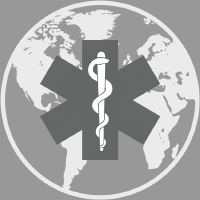Topic Menu
► Topic MenuTopic Editors


2. Biomedical Engineering Institute, Chiang Mai University, Chiang Mai 50200, Thailand
Artificial Intelligence in Healthcare
Topic Information
Dear Colleagues,
The complexity and rise of data in healthcare mean that artificial intelligence (AI) and related technologies will increasingly be applied in the field. This topic seeks to not only present solutions that combine state-of-the-art devices, computer software, model-based approaches for exploiting the huge health and bio data, and the Internet of Things resources available (while ensuring that these systems are explainable to domain experts), but also new methods that more generally describe the successful application of emerging technologies and spectra, and science and engineering to issues such as disease, cancer, databases, sensor device and user interfaces, software design, and system implementation in healthcare, as well as the medical domain, biology, and wellbeing domains. The main idea is to cover the applications of artificial intelligence (AI) and related technologies and engineering issues addressing all facets of solutions in the real world from databases, disease, and human health technology from a wellbeing and healthy life perspective. This topic welcomes the submission of technical, experimental, methodological, and data analytical, developing and implementing contributions focused on real-world problems and systems, as well as on general applications of AI, data mining, and data analytic methodologies in emerging technology solutions and real world applications related to life, disease, cancer, healthcare, and hospitals that can help human beings to lead heathy lives, including, but not limited to, the following topics:
• Data mining in healthcare
• Machine and deep learning approaches for disease, and health data
• Decision support systems for healthcare and wellbeing
• Regression and forecasting for medical and/or biomedical signals
• Healthcare and wellness information systems
• Medical signal and image processing and techniques
• Applications of AI techniques in healthcare and wellbeing systems
• Intelligent computing and platforms in medicine and healthcare
• Biomedical applications
• Biomedical text mining
• Deep learning and methods to explain disease prediction
• Big data frameworks and architectures for applied medical and health data
• Visualization and interactive interfaces related to healthcare systems
• Recommending and decision-making models and systems based on AI and data mining technologies
• Machine learning and deep learning applications for life, disease, cancer, healthcare, and hospitals
• Querying and filtering on heterogeneous, multi-source streaming life and health data
• Internet of things and data management for human life
• Data and applications for human life; data and applications for technology improvement
• Emerging technologies and applications of data, database, big data, and data mining, AI, models
Prof. Dr. Keun Ho Ryu
Prof. Dr. Nipon Theera-Umpon
Topic Editors
Keywords
- emerging and interdisciplinary technology
- artificial intelligence
- database and big data
- disease
- healthcare
- biomedicine/biomedical
- human life
Participating Journals
| Journal Name | Impact Factor | CiteScore | Launched Year | First Decision (median) | APC |
|---|---|---|---|---|---|

Applied Sciences
|
2.7 | 4.5 | 2011 | 16.9 Days | CHF 2400 |

Diagnostics
|
3.6 | 3.6 | 2011 | 20.7 Days | CHF 2600 |

Healthcare
|
2.8 | 2.7 | 2013 | 19.5 Days | CHF 2700 |

International Journal of Environmental Research and Public Health
|
- | 5.4 | 2004 | 29.6 Days | CHF 2500 |

MDPI Topics is cooperating with Preprints.org and has built a direct connection between MDPI journals and Preprints.org. Authors are encouraged to enjoy the benefits by posting a preprint at Preprints.org prior to publication:
- Immediately share your ideas ahead of publication and establish your research priority;
- Protect your idea from being stolen with this time-stamped preprint article;
- Enhance the exposure and impact of your research;
- Receive feedback from your peers in advance;
- Have it indexed in Web of Science (Preprint Citation Index), Google Scholar, Crossref, SHARE, PrePubMed, Scilit and Europe PMC.

